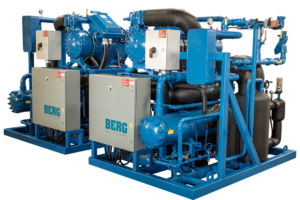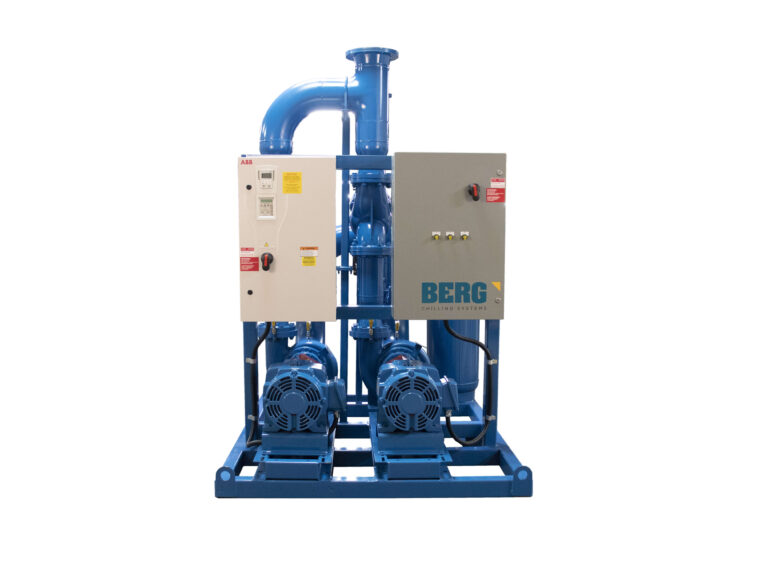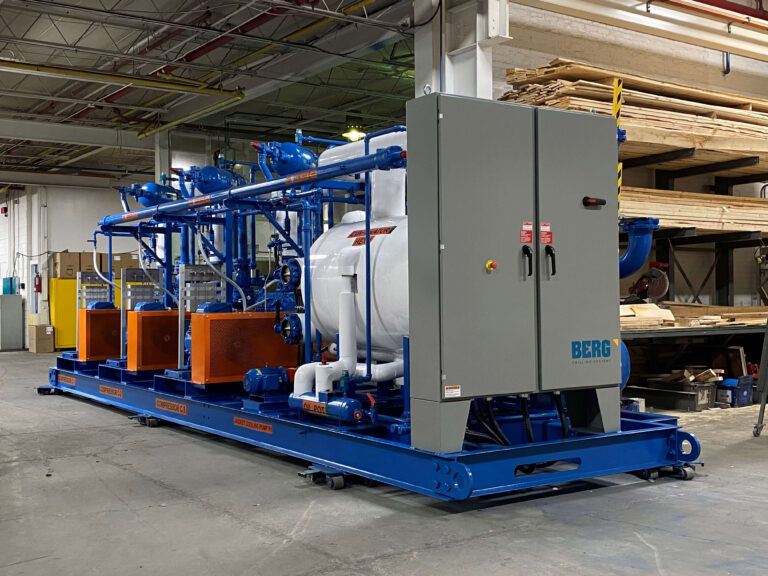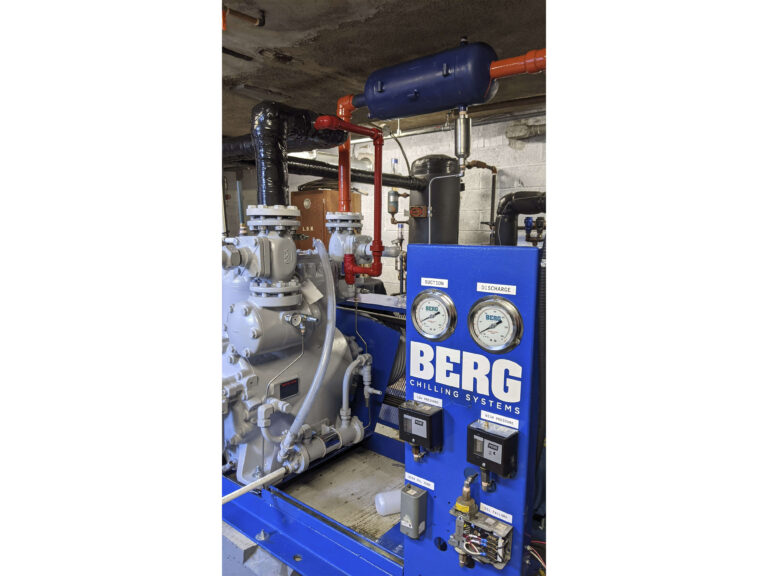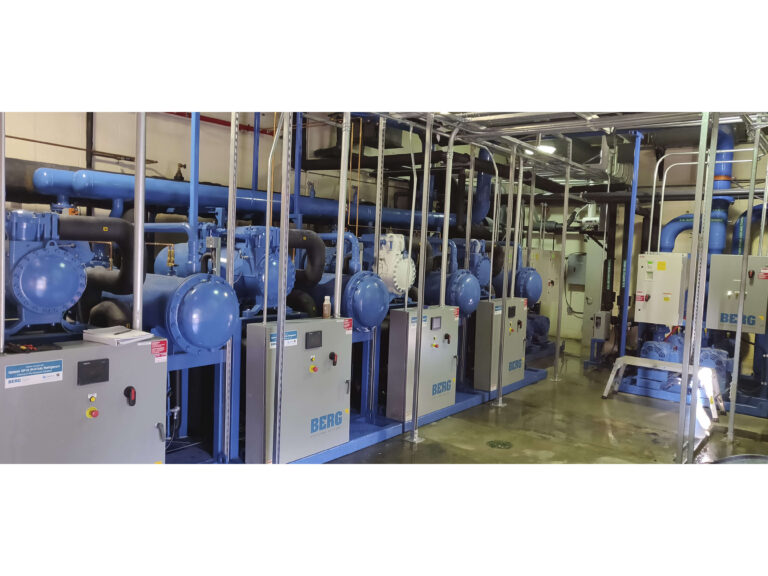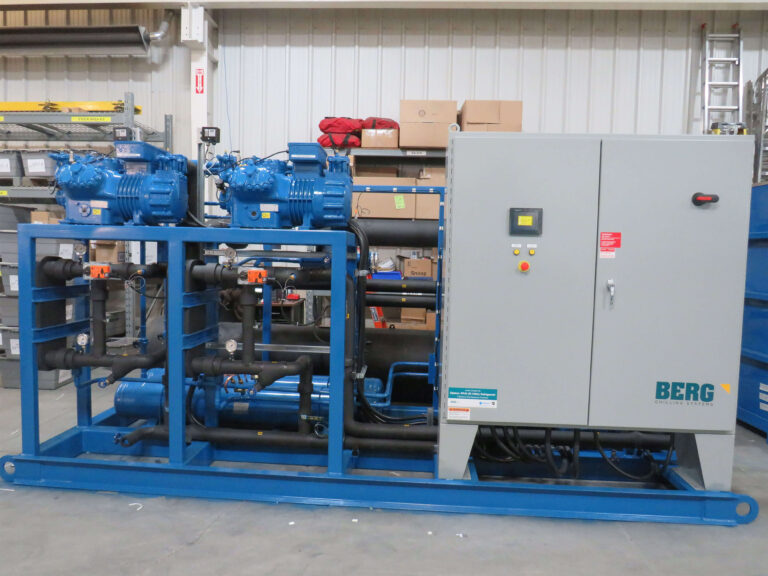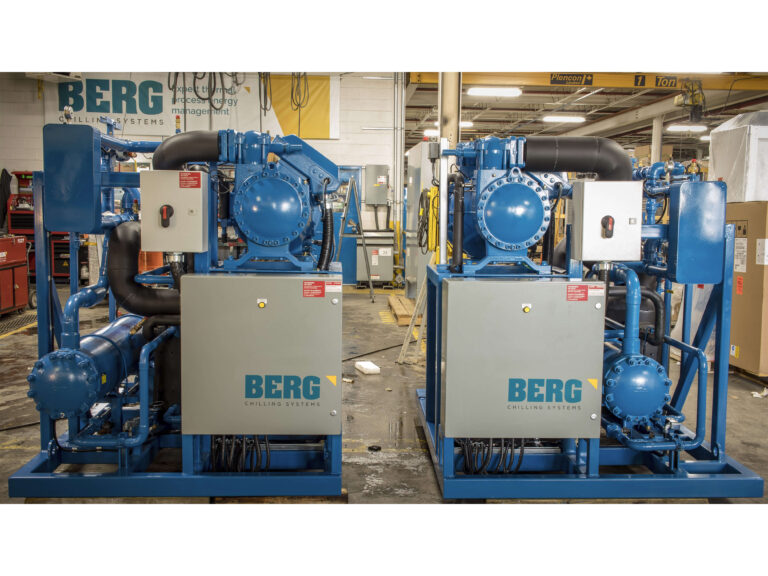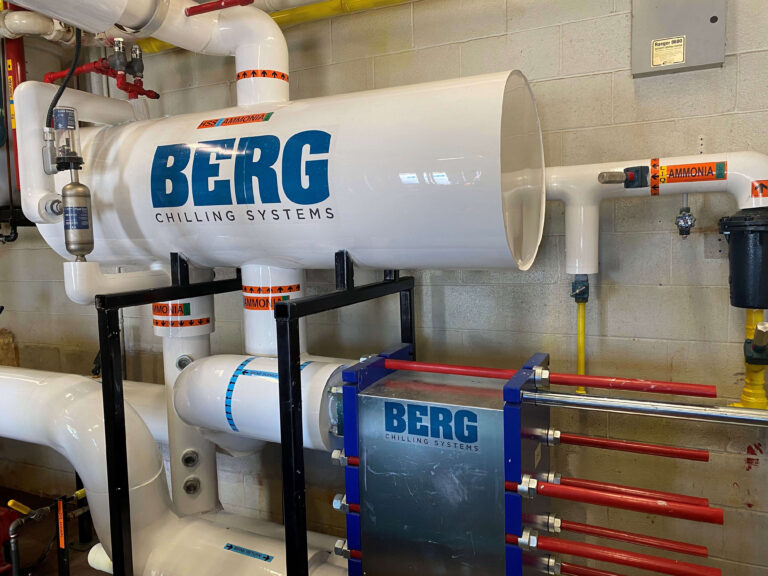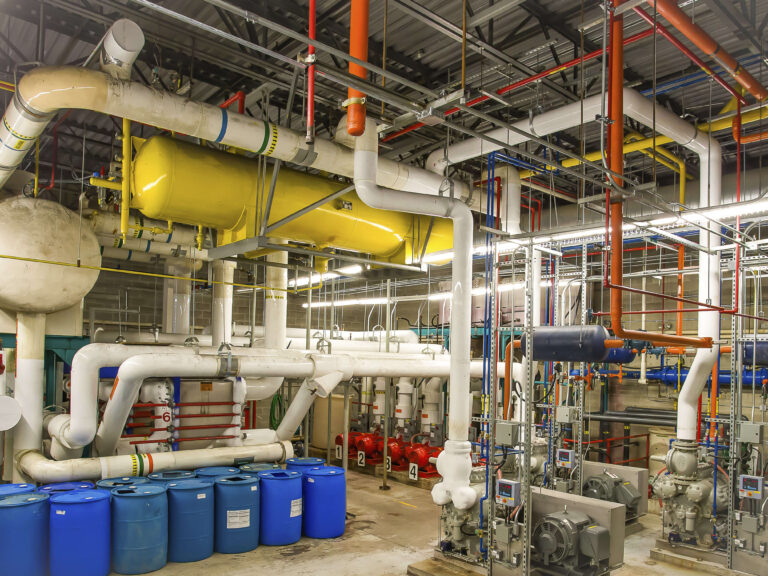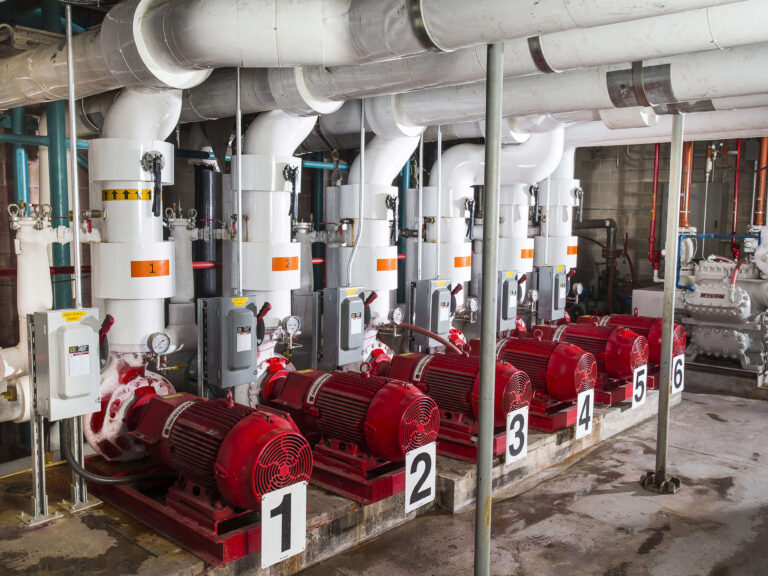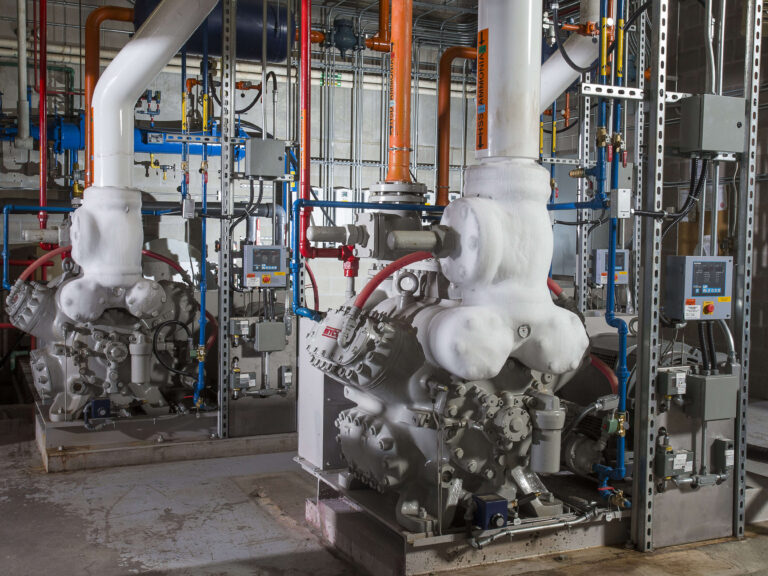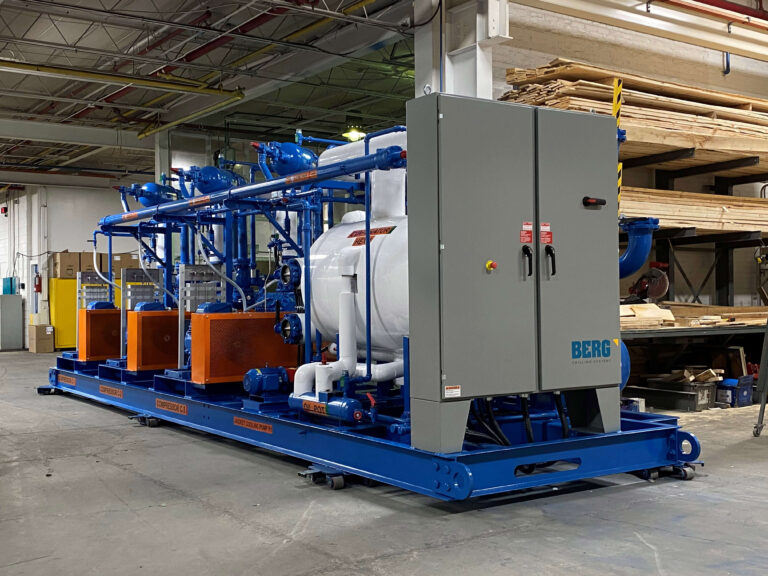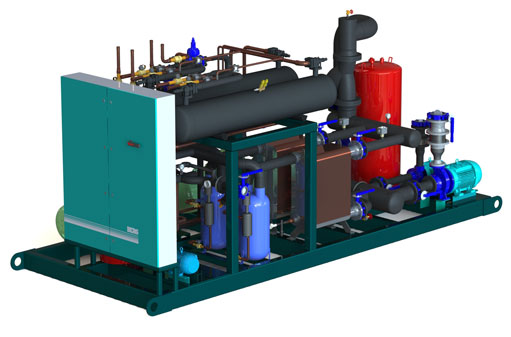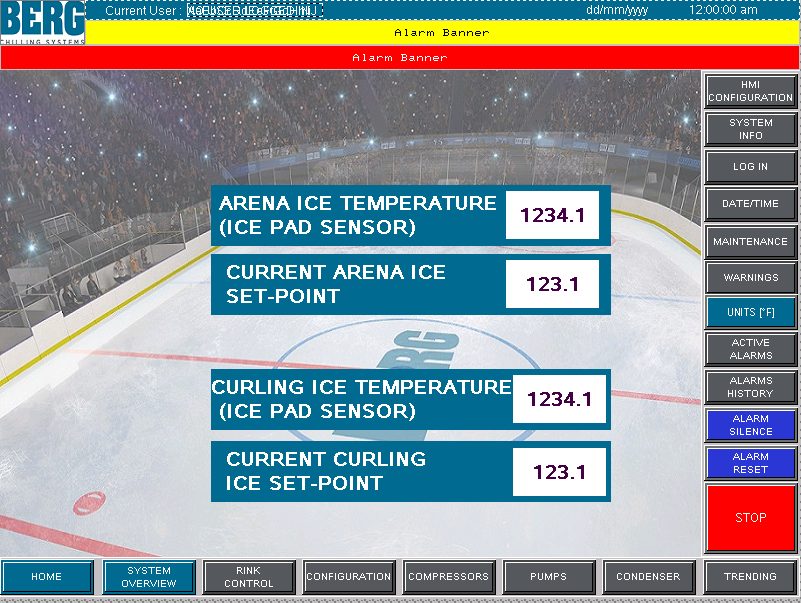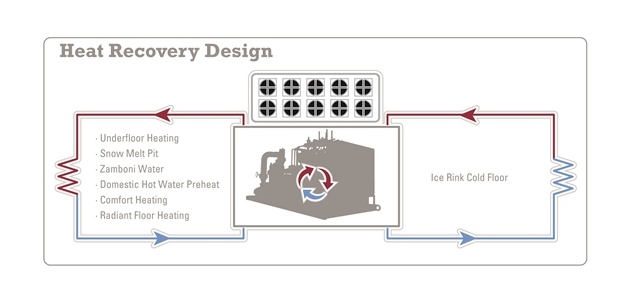Large capacity water filtration equipment produces deionized water, which is essential for making clear ice. Underneath the floor at the arena, you’ll find a refrigeration system similar the ones Berg Produces on this page. This system consists of three main pieces:
- Water or air cooled ice rink chiller
- Steel pipes with thousands of welds
- Brine water (an antifreeze agent)
Typically, 8 km (5 miles) of steel pipe wind under the rink in the arena (A), removing heat from the concrete slab (C). Refrigeration chiller equipment cools brine water to -9°C (16°F) and provides cooling. The brine water’s chemical properties keep it from freezing. To freeze the rink surface, the system pumps chilled brine water through the pipes and then onto the ice-bearing concrete slab. The brine water is pumped into the pipes (B) embedded in the ice-bearing concrete slab (C). The ice-bearing slab sits between the skating surface (D) and a layer of insulation (E), which allows the ice to expand and contract as temperatures and time demand. The brine water helps maintain the ice-bearing slab’s temperature just below 0°C (32°F) so that the water spread onto it can freeze. Beneath the layer of insulation, a heated concrete layer (F) keeps the ground below the ice from freezing and expanding, eliminating the potential for cracking damage to the rink structure. The entire ice rink sits on a base layer of gravel and sand (G) which has a groundwater drain at the bottom. To defrost the skating surface, the brine water is heated and pumped through the ice-bearing concrete slab. This heats the under-layer of the ice, making it easier to break up and remove with front-end loaders.

